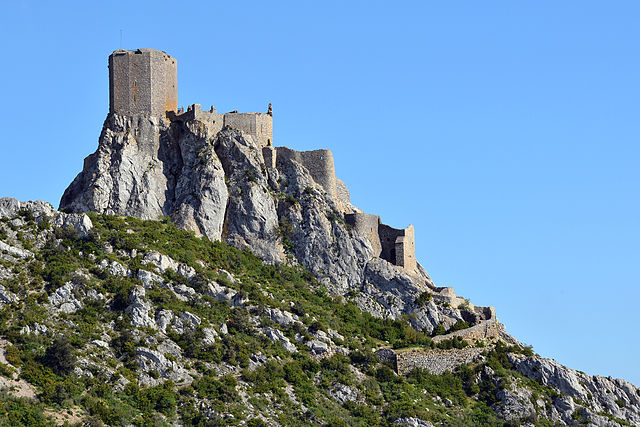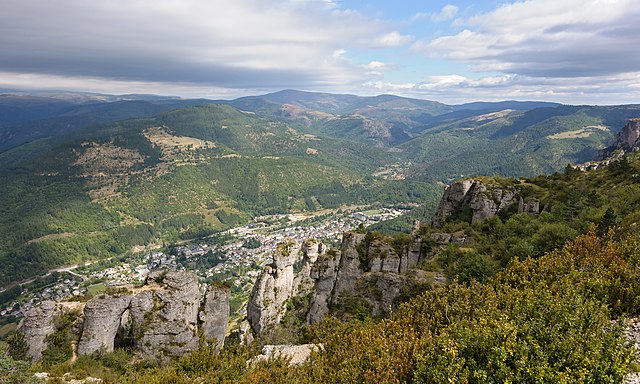Cathar castles are a group of medieval castles located in the Languedoc region. Some had a Cathar connection in that they offered refuge to dispossessed Cathars in the thirteenth century. Many of these sites were replaced by new castles built by the victorious French Crusaders and the term Cathar castle is also applied to these fortifications despite their having no connection with Cathars. The fate of many Cathar castles, at least for the early part of the Crusade, is outlined in the contemporary Occitan "Chanson de la Croisade", translated into English as the "Song of the Cathar Wars ".
Le Château de Quéribus
Lastours castles (13th century)
The Province of Languedoc is a former province of France.
Most of its territory is now contained in the modern-day region of Occitanie in Southern France. Its capital city was Toulouse. It had an area of approximately 42,700 square kilometers.
Toulouse (1650), capital of Languedoc.
Saint-Sernin Basilica in Toulouse, displaying the typical pink brick architecture of Upper Languedoc.
Typical view of the mountainous Cévennes area in the thinly-populated interior of Languedoc: plateaus (the Causses) with deep river canyons
The first completed Airbus A380 at the "A380 Reveal" event on 18 January 2005 in Toulouse, home base of the European aerospace industry.






